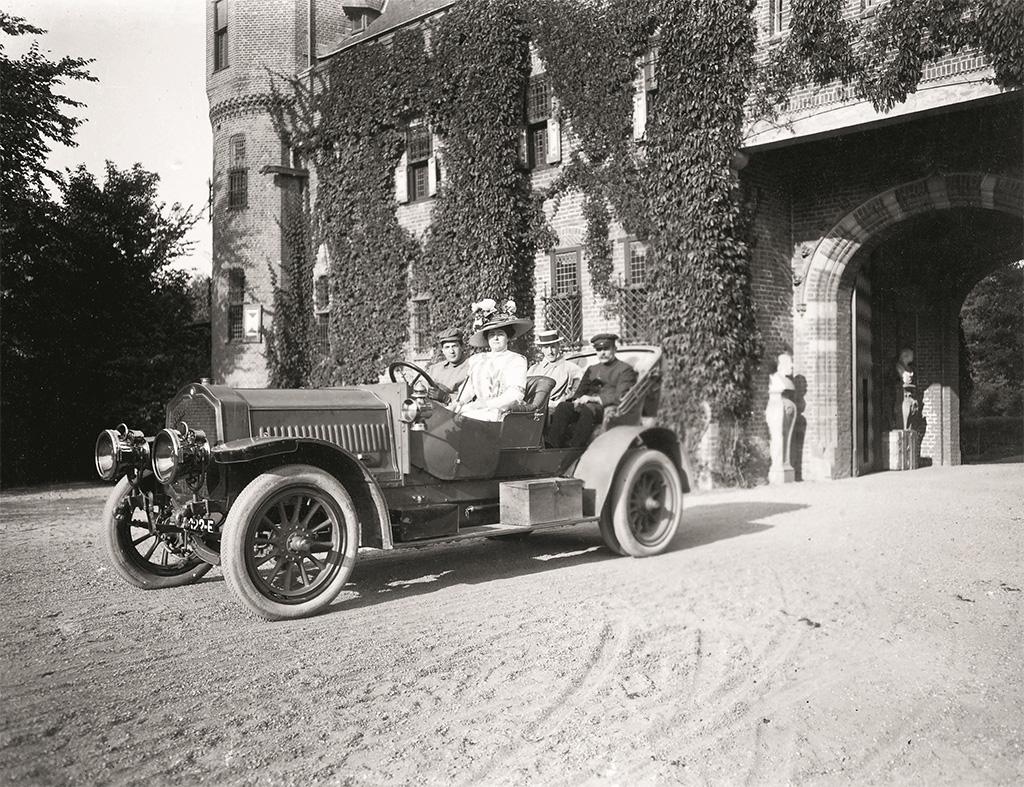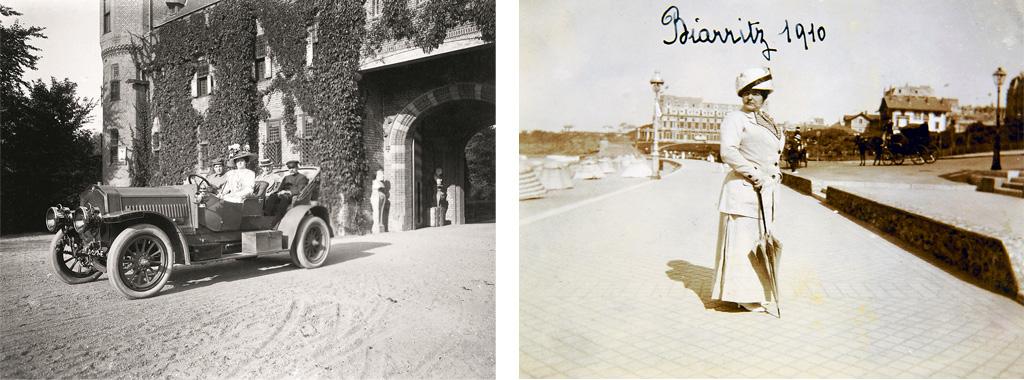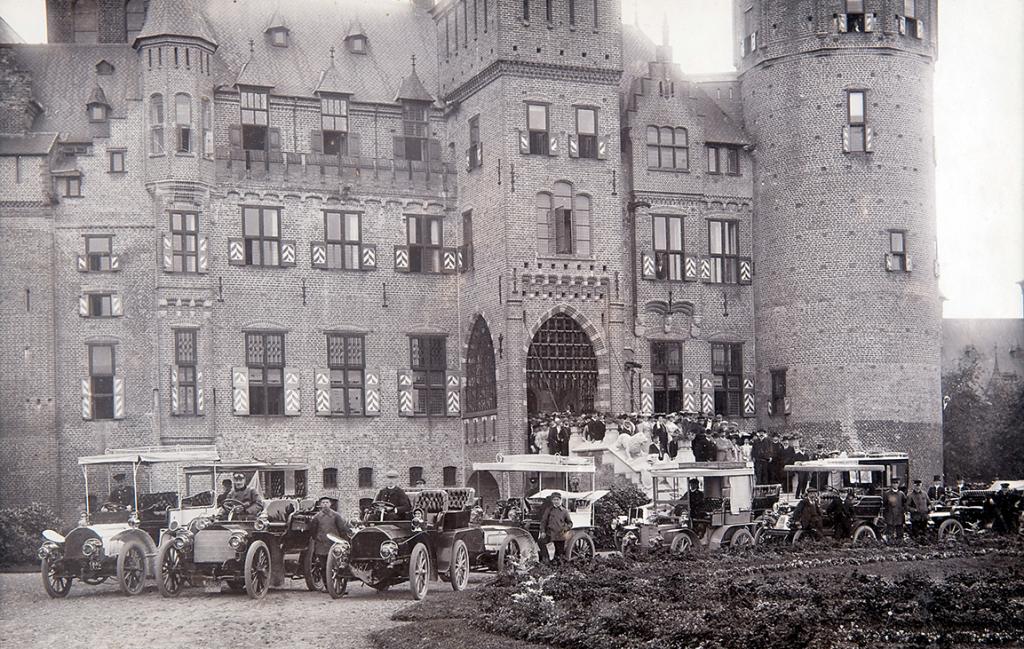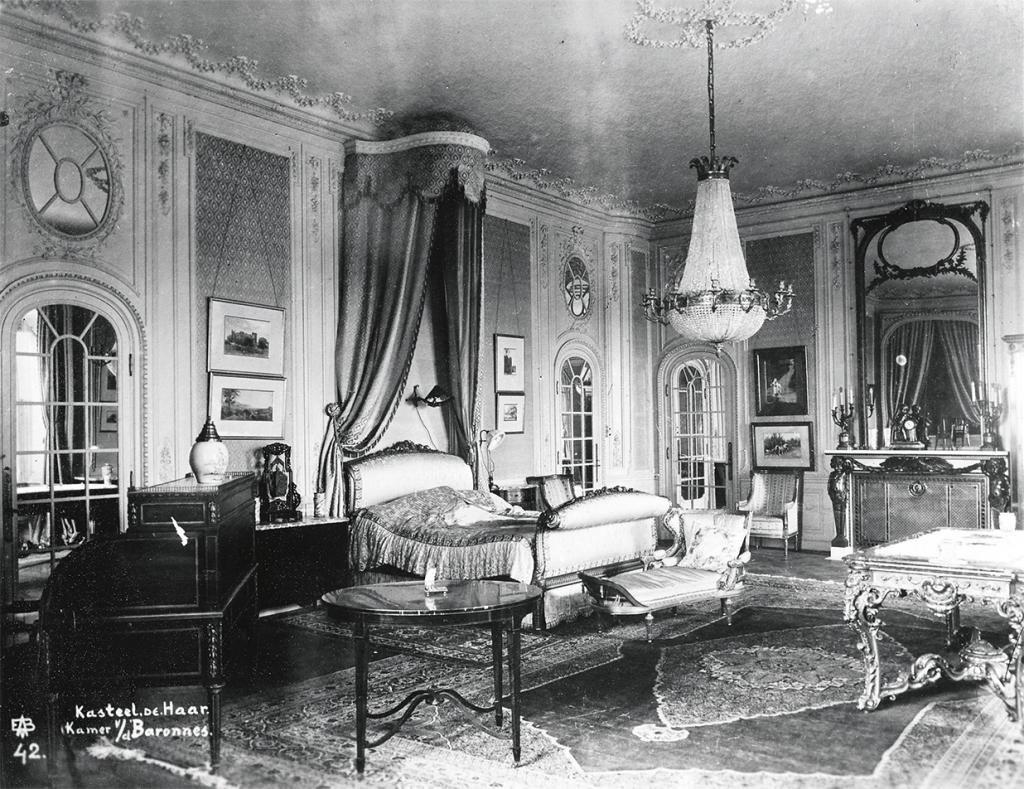RKD Podcast: Hélène de Rothschild

A new episode has appeared in the podcast series on women collectors. Katrien Timmers, curator of De Haar Castle tells podcast maker Caspar Stalenhoef about the eventful life of Hélène de Rothschild (1863-1947).
Headstrong woman
Hélène de Rothschild descended from the well-known Jewish banking family De Rothschild. She was a free-spirited type. Hélène had an eventful life, very different from what her protective and conservative family had laid out for her. She married Etienne van Zuylen van Nijevelt in 1887, but took care to keep her legal capacity in her marriage contract, unique for the time. The couple shared their love of travel, horses and cars - Hélène was one of the first women ever to participate in a car race.

2. Hélène on the boulevard in Biarritz, 1910. She was 47 years old at the time.
De Haar Castle
Hélène de Rothschild's greatest cultural legacy is De Haar Castle, near Utrecht. Etienne van Zuylen inherited it in 1890. The castle was then rebuilt and decorated with her money – and partly to her taste. The couple had two sons, the eldest of whom died in 1912 while on his way to De Haar Castle. After that, Hélène did not like to visit, living increasingly separately from Etienne. Around 1918, she began a relationship with Portuguese writer and feminist Olga de Moraes, with whom she lived until her death.

Collecting for the interior
Besides Hélène de Rothschild's turbulent life, her collecting is also discussed in the podcast. Caspar Stalenhoef talks about this with Katrien Timmers, who points out parts of that collection during a tour of various rooms in De Haar Castle. The castle is still decorated according to Hélène's taste. She was broadly interested and loved curious objects. In collecting art, ceramics and objects, she was very eclectic. Unlike her father and aunts, Timmers reveals, she was not a true art collector, she was particularly focused on furnishing the castle.

The series of the podcast Kroniek Kunstgeschiedenis on women collectors in art between 1780 and 1980 is part of the research project The Other Half and was created thanks to support from the Wilhelmina Drucker Fundatie.